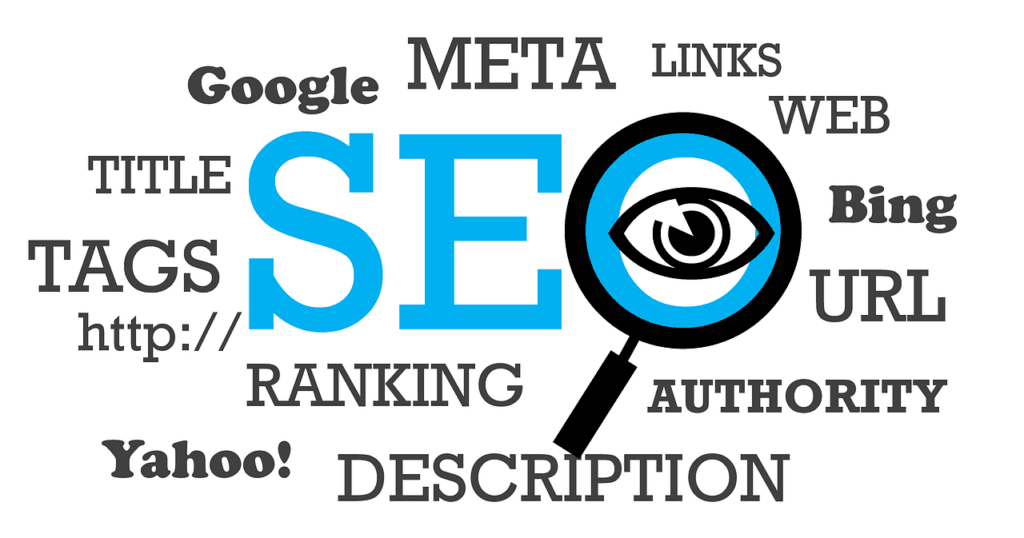This Article has been revised, edited and added to, by Poulomi Chakraborty.
- The Digital Banking Revolution and its Online Footprint
- FinTech Integrations & Highlighting Collaborations
- Eco-friendly Banking and Green Initiatives
- AI and Machine Learning: Banking's Digital Brainpower
- Cryptocurrency & Digital Banking: A Brave New World
- Personalized Banking Experience with Data Analytics
- Blockchain Beyond Cryptocurrency: The New Trust Mechanism
- Conclusion: Navigating the Future with SEO at the Helm
Banking, an industry steeped in tradition, is in the throes of a transformative wave. As digitalization, new financial technologies, and evolving customer expectations intersect, the future of banking is being redefined. However, with this evolution comes the challenge of making sure that these fresh insights and trends are discoverable by a vast online audience. Enter the world of SEO, the linchpin that ensures that tomorrow’s banking revelations don’t get lost in the digital abyss. By converging advanced SEO practices with the latest in banking trends, institutions can not only keep their stakeholders informed but also engage a new generation of digitally-savvy clients. Let’s embark on a journey into the intricate dance of SEO and the future of banking.
The Digital Banking Revolution and its Online Footprint

The era of standing in long queues at brick-and-mortar branches is gradually fading. As more banking operations move online, the need to ensure that these digital services are easily discoverable is paramount.
Expanding the Reach of Digital Banking Services
The transformation from traditional to digital banking has not only redefined how financial institutions operate but also how they connect with customers. As this evolution accelerates, the imperative to expand the digital footprint through strategic SEO practices becomes ever more crucial. For startup founders in the digital banking sphere, understanding and implementing advanced SEO strategies is key to outpacing competition and capturing the attention of a digitally-savvy clientele.
Enhancing User Experience Through SEO
Prioritizing Speed and Accessibility
In the digital banking revolution, speed and accessibility are not just conveniences—they are expectations. Enhancing the user experience begins with website and app optimization. A seamless, fast-loading digital platform can significantly lower bounce rates and improve engagement metrics. This involves optimizing image sizes, leveraging browser caching, and minimizing the use of blocking JavaScript. Moreover, ensuring that digital banking platforms are fully accessible, including to those with disabilities, can broaden your audience reach and improve your SEO rankings.
Implementing Structured Data
To further refine the online footprint of digital banking services, the use of structured data is indispensable. This means applying schema markup to web pages to help search engines better understand the content. For a digital banking platform, marking up product offerings such as savings accounts, loan services, or mobile banking apps with schema.org vocabulary can enhance visibility in search results through rich snippets. This could include interest rates, customer reviews, or app features, presented directly in the search results, making the information more accessible to users and potentially increasing click-through rates.
Leveraging Emerging Technologies for Enhanced Visibility
AI-Powered SEO Strategies
The integration of artificial intelligence (AI) in developing SEO strategies offers a significant advantage. AI tools can analyze vast amounts of data to identify emerging trends and predict keyword performance, enabling digital banks to stay ahead of industry shifts. Utilizing AI for personalized content creation can also improve user engagement and retention. By analyzing user behavior, AI can help tailor the content strategy to address the specific needs and interests of different segments of your audience.
Voice Search Optimization
With the rise of digital assistants, optimizing for voice search has become a critical element in expanding a digital bank’s online footprint. Voice search queries are often longer and more conversational than text-based searches. Therefore, including long-tail keywords and questions in your content that mirror natural speech patterns can capture this audience. For example, creating content that answers questions like “How can I open a digital bank account?” or “What are the benefits of mobile banking?” can align with voice search queries, driving more organic traffic to your platform.
Building a Community Through Value-Driven Content
Engaging Through Educational Content
In the vast sea of digital information, banks that position themselves as educators and advisors can build a loyal community. Producing comprehensive guides on financial wellness, investment strategies, and the benefits of digital banking not only serves to educate but also to engage potential customers. This strategy establishes your platform as a reliable source of information, encouraging repeat visits and enhancing your SEO through increased dwell time and reduced bounce rates.
Social Media Integration
Social media platforms offer a powerful channel to amplify the reach of your digital banking services. Integrating social media activities with your SEO strategy can drive traffic to your website and improve search engine rankings. This involves sharing value-driven content, engaging with your audience through comments and direct messages, and using social media insights to refine your SEO approach. Leveraging social media analytics, you can understand which topics resonate with your audience, allowing for more targeted and effective content strategies.
FinTech Integrations & Highlighting Collaborations

The intersection of financial services and technology has given rise to an unprecedented era of innovation and collaboration. For startups navigating the FinTech space, the key to thriving lies not just in developing cutting-edge solutions but also in forging strategic alliances. These partnerships between traditional banks and FinTech companies are not merely transactional relationships; they are collaborative ventures that can redefine the financial landscape.
Developing a Content Strategy that Showcases Synergy
Highlighting the Value Proposition
In the realm of FinTech collaborations, the articulation of a clear, compelling value proposition is fundamental. This involves crafting a narrative that transcends the mere functionality of the services or products offered. It’s about telling a story that encapsulates the mutual benefits and the enhanced value provided to customers through these partnerships. Content should delve into how these collaborations make financial transactions more seamless, secure, and accessible, thereby addressing the core needs and aspirations of the target audience.
Leveraging Multi-Channel Storytelling
To effectively highlight FinTech integrations and collaborations, employing a multi-channel storytelling approach is crucial. This encompasses an array of content formats—from blog posts and case studies to videos and podcasts—each tailored to communicate the collaborative efforts and innovations in an engaging manner. Utilizing diverse content types not only caters to varied audience preferences but also reinforces the message across different platforms, enhancing overall visibility and impact.
Utilizing Advanced SEO Techniques to Amplify Visibility
Semantic SEO for Enhanced Understanding
As the FinTech sector continues to evolve, so too does the sophistication of search engines. Leveraging semantic SEO, which focuses on the intent and contextual meaning behind search queries, can significantly improve the visibility of content related to FinTech collaborations. This involves optimizing content to answer the specific questions that potential customers might have about how FinTech partnerships can benefit them, thus aligning with the conversational nature of modern search queries.
Building Backlinks through Industry Engagement
In the digital age, the authority and credibility of a website are paramount, significantly influencing its search engine rankings. One effective strategy to enhance these aspects is through building backlinks from reputable sites within the financial and technology sectors. Engaging in industry forums, contributing guest articles to established financial news outlets, and participating in FinTech conferences can create opportunities for generating high-quality backlinks, driving traffic, and improving SEO performance.
Fostering Community Engagement and Feedback
Encouraging User-Generated Content
A vibrant, engaged community can be a potent asset in highlighting FinTech integrations and collaborations. Encouraging users to share their experiences, reviews, and testimonials not only provides authentic insights into the benefits of these partnerships but also contributes to the content ecosystem, enhancing SEO through fresh, relevant content. Hosting Q&A sessions, webinars, or live discussions on social media platforms can further galvanize community engagement, fostering a sense of belonging and loyalty among users.
Utilizing Data Analytics for Content Optimization
In the dynamic landscape of FinTech, the ability to adapt and refine content strategies based on data analytics is invaluable. Analyzing user engagement metrics, search trends, and feedback can reveal insights into content performance and audience preferences, guiding the optimization of future content. This data-driven approach ensures that the narrative around FinTech collaborations remains relevant, engaging, and aligned with the evolving interests of the target audience.
Eco-friendly Banking and Green Initiatives

In an era where environmental consciousness is not just appreciated but expected, banks and financial institutions are uniquely positioned to lead by example. For startups within the banking sector, integrating eco-friendly practices and green initiatives into their operations and messaging is not only a moral imperative but a strategic differentiator. This commitment to sustainability can resonate deeply with consumers, particularly those who prioritize environmental considerations in their choice of financial partners.
Crafting a Green Content Marketing Strategy
Articulating a Sustainable Vision
The foundation of any green initiative within the banking sector begins with a clear, compelling sustainable vision. This vision should articulate not only the environmental benefits of the bank’s practices but also how these efforts contribute to a more sustainable future for the community and the planet. Content should communicate this vision in a way that is both informative and inspiring, emphasizing the bank’s commitment to positive environmental impact.
Storytelling with Impact
Beyond the basics of eco-friendly banking, there’s a powerful story to be told about the impact of these initiatives. Banks should leverage storytelling techniques to share success stories of their green policies in action. This could involve highlighting community projects funded by green loans, showcasing innovations in reducing the bank’s carbon footprint, or detailing partnerships with environmental organizations. By making these stories relatable and personal, banks can engage their audience on an emotional level, fostering a deeper connection and commitment to eco-friendly practices.
Leveraging SEO for Green Banking Initiatives
Targeting Green Keywords
To enhance the online visibility of eco-friendly banking initiatives, a strategic approach to keyword optimization is essential. Banks should identify and target green-specific keywords that potential customers are likely to use when searching for environmentally responsible banking options. This includes terms related to green banking products, sustainable investing, and eco-friendly banking practices. By optimizing content for these keywords, banks can improve their search rankings for relevant queries, attracting a more targeted audience interested in sustainability.
Creating an Eco-Friendly Banking Hub
One innovative way to centralize and highlight a bank’s commitment to sustainability is through the creation of an online eco-friendly banking hub. This dedicated section of the bank’s website can serve as a repository for all content related to green initiatives, including blog posts, white papers, case studies, and videos. Not only does this provide a one-stop-shop for consumers interested in sustainable banking, but it also enhances the site’s SEO by creating a rich, interconnected network of green-related content.
Engaging with the Green Community
Collaborating with Environmental Influencers
Building relationships with influencers and thought leaders in the environmental space can amplify the reach and credibility of a bank’s green initiatives. By collaborating on content creation or participating in joint sustainability projects, banks can tap into the influencers’ established audiences, gaining visibility and engagement from a group of environmentally conscious individuals. Additionally, these collaborations can provide valuable backlinks and social media mentions, further boosting SEO efforts.
Participating in Green Forums and Discussions
Active participation in online forums and discussions related to sustainability can also enhance the visibility of a bank’s eco-friendly initiatives. By contributing valuable insights and information to these conversations, banks can position themselves as thought leaders in the space of green banking. This not only fosters community engagement but also drives traffic to the bank’s website, as interested individuals seek to learn more about their initiatives and offerings.
AI and Machine Learning: Banking’s Digital Brainpower

The integration of artificial intelligence (AI) and machine learning (ML) into banking operations is revolutionizing the way financial institutions interact with their customers. For startup founders in the banking sector, leveraging AI to create personalized banking experiences can be a significant competitive advantage. This shift towards personalized services, powered by AI, not only enhances customer satisfaction but also opens new avenues for data-driven decision-making and targeted marketing.
Enhancing Customer Service with AI
Crafting AI-Driven Customer Support
The advent of AI has transformed customer service within the banking industry. Implementing AI-driven chatbots and virtual assistants can provide customers with instant, 24/7 support for a range of inquiries, from simple account questions to more complex financial advice. These AI tools can learn from each interaction, continuously improving the quality of support provided. Additionally, by analyzing customer queries and interactions, banks can identify common pain points and opportunities for service enhancements.
Personalizing Financial Advice
AI and ML algorithms can analyze vast amounts of data to offer personalized financial advice to customers. By understanding a customer’s spending habits, investment history, and financial goals, AI can tailor recommendations for savings plans, investment strategies, and even suggest relevant financial products. This level of personalization not only improves customer engagement but also reinforces the bank’s role as a trusted advisor in the customer’s financial journey.
Optimizing Operations with AI and ML
Streamlining Back-End Processes
AI and ML are not only transformative on the customer-facing side but also in optimizing back-end banking operations. From automating routine tasks such as data entry and transaction processing to more complex processes like credit scoring and fraud detection, AI can significantly increase efficiency and reduce operational costs. For startups, this means being able to offer competitive rates and services by leveraging technology to streamline operations.
Enhancing Risk Management
The predictive capabilities of AI and ML are particularly valuable in the area of risk management. By analyzing historical data and market trends, AI algorithms can identify potential risks and anomalies that may indicate fraudulent activity or credit default. This allows banks to proactively manage risks, reducing losses and improving financial stability. Furthermore, AI-driven insights can inform strategic decision-making, enabling banks to navigate market volatility with greater confidence.
Building AI-Enabled Banking Products
Developing Smart Financial Products
In the era of digital banking, customers are looking for more than just online access to their accounts; they’re seeking smarter, AI-enabled financial products. Startups can differentiate themselves by developing products that leverage AI for enhanced functionality. For example, savings accounts that automatically adjust interest rates based on market conditions, or credit cards that offer personalized rewards based on spending patterns. These innovative products can attract tech-savvy customers and create new revenue streams for the bank.
Creating an Ecosystem of AI-Integrated Services
Beyond individual products, there’s an opportunity to create a cohesive ecosystem of AI-integrated banking services. This could include integrating third-party financial services, such as insurance or investment platforms, into the bank’s app, all powered by AI to ensure seamless, personalized experiences for the user. By creating a one-stop-shop for customers’ financial needs, banks can increase engagement, loyalty, and ultimately, profitability.

Related: Check out our free SEO suite

Cryptocurrency & Digital Banking: A Brave New World
The fusion of cryptocurrency with digital banking marks a transformative era in the financial industry. For startups looking to carve out a niche in this dynamic sector, understanding and integrating cryptocurrency solutions can serve as a critical differentiator. This integration not only appeals to a growing demographic of crypto-enthusiasts but also positions these startups as forward-thinking and adaptable to emerging financial technologies.
Innovating with Crypto-Friendly Banking Products
Designing Tailored Crypto Banking Services
In the realm of cryptocurrency and digital banking, innovation is key. Startups should focus on developing banking products and services that cater specifically to the needs of cryptocurrency users. This could include creating dedicated crypto savings accounts that offer interest on crypto deposits, debit cards that allow spending of crypto assets, or loan services using cryptocurrency as collateral. Such products not only meet the unique needs of crypto users but also integrate seamlessly with traditional banking services, offering the best of both worlds.
Secure and Efficient Crypto Transaction Platforms
Security and efficiency are paramount in the handling of cryptocurrency transactions. Startups should invest in building platforms that not only ensure the utmost security of crypto transactions but also offer speed and efficiency. Utilizing blockchain technology for its inherent security features and implementing advanced encryption methods can protect users’ assets and personal information. Moreover, optimizing transaction processes to minimize wait times and fees can enhance customer satisfaction and loyalty.
Leveraging SEO to Educate and Engage
Creating Educational Content on Cryptocurrency
With the complexity of cryptocurrency and its underlying technology, there exists a significant opportunity for digital banks to educate their audience. Producing comprehensive guides, articles, and videos that demystify cryptocurrencies, blockchain technology, and their implications for the future of banking can attract a wide audience. By optimizing this educational content for search engines, startups can not only improve their visibility but also establish themselves as authoritative and trustworthy sources of information in the crypto space.
Engaging with the Community on Emerging Platforms
The cryptocurrency community is highly active on emerging digital platforms such as blockchain-based social networks and decentralized forums. Engaging with this community by sharing insights, participating in discussions, and providing valuable content can enhance a startup’s visibility and reputation within the crypto ecosystem. Furthermore, leveraging these platforms for SEO through backlinks and social signals can drive traffic to the startup’s website, improving its search ranking and online presence.
Building Trust and Compliance in Crypto Banking
Prioritizing Transparency and Regulatory Compliance
As the cryptocurrency landscape continues to evolve, trust and compliance remain central to its adoption in digital banking. Startups must prioritize transparency in their operations, clearly communicating their compliance with regulatory standards and their commitment to protecting customer assets. This includes obtaining necessary licenses, conducting regular audits, and implementing robust anti-money laundering (AML) and know-your-customer (KYC) protocols. By demonstrating a commitment to regulatory compliance and customer security, startups can build trust and credibility in the crypto banking space.
Implementing Customer Education Programs
Education plays a crucial role in fostering trust and adoption of cryptocurrency in digital banking. Startups should implement customer education programs that cover the basics of cryptocurrency, the security measures in place to protect their assets, and how to navigate the regulatory landscape. By empowering customers with knowledge, startups can alleviate concerns about the security and legality of cryptocurrency, encouraging its wider acceptance and use in banking.
Personalized Banking Experience with Data Analytics

In today’s digital era, data analytics has emerged as the cornerstone of personalized banking experiences. Startups in the financial sector have the unique opportunity to harness the power of data to transform customer interactions, offering services that are not just personalized, but also predictive and proactive. This new paradigm in banking is not just about understanding what the customers want but anticipating their needs even before they do.
Creating a 360-Degree Customer View
Integrating Data for Comprehensive Insights
The foundation of personalized banking is a comprehensive view of the customer, achieved by integrating data from multiple sources. This includes transactional data, customer service interactions, online behavior, and social media activity. By leveraging advanced data analytics tools and machine learning algorithms, startups can analyze this diverse data set to gain deep insights into individual customer preferences, behaviors, and needs. This 360-degree customer view enables banks to tailor their offerings, communicate more effectively, and enhance customer satisfaction.
Leveraging Predictive Analytics for Personalized Offers
With the advent of predictive analytics, financial institutions can now forecast future customer behavior with remarkable accuracy. This allows for the creation of personalized product recommendations, financial advice, and timely offers that resonate with individual customers. For instance, analyzing spending patterns might reveal a customer’s likelihood to purchase a home, prompting the bank to offer a personalized mortgage rate. Predictive analytics can also identify potential financial stress early on, enabling the bank to offer tailored financial planning services to help the customer manage their finances more effectively.
Enhancing User Experience with AI and Machine Learning
Personalizing the Digital Interface
The user interface (UI) is the primary touchpoint for digital banking customers, making its personalization crucial for enhancing user experience. By applying AI and machine learning to user data, startups can create dynamic UIs that adapt to the individual user’s preferences and behaviors. This might include customizing the dashboard to highlight features and information relevant to the user, or adjusting the navigation based on the user’s most frequent actions. Such personalized interfaces not only improve usability but also deepen the customer’s connection with the bank.
Automating Personalized Communication
In the realm of personalized banking, communication plays a pivotal role. AI-driven communication tools can automate and personalize customer interactions across various channels, including email, SMS, and in-app messages. By analyzing customer data, these tools can ensure that messages are sent at the optimal time and through the preferred channel, increasing engagement rates. Furthermore, natural language processing (NLP) can be used to tailor the tone and style of the communication to match the customer’s preferences, making interactions feel more personal and human-like.
Building Trust Through Transparency and Security
Prioritizing Data Privacy and Security
In an age where data breaches are all too common, ensuring the privacy and security of customer data is paramount. Startups must employ state-of-the-art security measures, including encryption, secure access controls, and regular security audits, to protect sensitive customer information. Additionally, being transparent about how customer data is used to personalize experiences can help build trust. This includes providing customers with clear privacy policies, easy-to-use data privacy settings, and the option to opt-out of data collection for personalization purposes.
Educating Customers on Data-Driven Personalization
Educating customers about the benefits of data-driven personalization and the measures taken to ensure their privacy can further enhance trust. This could involve creating informative content that explains how personalization works, the benefits it offers, and how data is kept secure. Providing examples of personalized experiences can also help customers understand the value proposition, making them more likely to engage with personalized services.
Blockchain Beyond Cryptocurrency: The New Trust Mechanism

In the modern banking landscape, trust is both a fundamental necessity and a significant challenge. Blockchain technology, renowned for underpinning cryptocurrencies, holds the potential to redefine trust in banking far beyond the realm of digital currencies. For startups in the financial sector, leveraging blockchain as a trust mechanism can serve as a powerful differentiator, fostering transparency, security, and efficiency in a myriad of banking processes.
Enhancing Transactional Integrity with Blockchain
Streamlining Cross-Border Payments
Blockchain technology can revolutionize cross-border payments, traditionally fraught with delays, high fees, and regulatory hurdles. By utilizing blockchain, startups can facilitate instant, secure, and cost-effective international transactions. This not only improves customer satisfaction but also positions these startups as pioneers of a global financial network that transcends traditional banking limitations.
Ensuring Transparency in Transactions
The immutable nature of blockchain provides an unparalleled level of transparency in transactions. Each transaction is recorded on a distributed ledger, accessible to all parties involved, thus eliminating disputes and enhancing trust. For startups, implementing blockchain means providing customers with real-time access to transaction data, a move that can significantly boost confidence among stakeholders.
Blockchain for Secure and Efficient Identity Verification
Revolutionizing KYC and AML Processes
Know Your Customer (KYC) and Anti-Money Laundering (AML) processes are crucial for combating financial crimes but are often cumbersome and resource-intensive. Blockchain can streamline these processes by creating a secure, immutable ledger of customer identities. Once a customer’s identity is verified and recorded on the blockchain, it can be securely shared with other financial institutions, reducing redundancy, speeding up verification processes, and lowering operational costs.
Facilitating Secure Digital Identities
In the digital age, identity theft and fraud are rampant. Blockchain can provide a robust solution by enabling the creation of secure, verifiable digital identities for banking customers. These digital identities, stored on the blockchain, can be used to authenticate transactions, access services, and sign documents, offering a higher level of security and convenience for both banks and customers.
Leveraging Blockchain for Smart Contracts in Banking
Automating Contract Execution
Smart contracts, self-executing contracts with the terms of the agreement directly written into code, are among the most promising applications of blockchain in banking. They can automate various financial agreements, from loans and mortgages to insurance claims, ensuring that all conditions are met before funds are released. This automation not only reduces the potential for errors and fraud but also significantly increases the speed and efficiency of banking operations.
Enhancing Trust in Financial Agreements
By utilizing smart contracts, startups can offer their customers a new level of trust in financial agreements. The transparency and immutability of blockchain ensure that once a contract is created, its terms cannot be altered without the consent of all parties involved. This fosters a transparent, trust-based relationship between banks and their customers, crucial for long-term engagement and loyalty.
Conclusion: Navigating the Future with SEO at the Helm
The world of banking is in a continuous flux, with technology and customer preferences driving rapid transformations. Yet, as we’ve journeyed through the multifaceted landscape of modern banking trends, one thread remains consistent: the indispensable role of SEO.
While banks break new ground with innovations ranging from blockchain to virtual banking, it is SEO that ensures these advancements don’t remain siloed in a tech bubble. Instead, through strategic content optimization, engagement tactics, and user-centric approaches, SEO bridges the gap between these innovations and the global audience.
Read Next
- Best Accounting Software for Small Businesses: A Comprehensive Review
- How Game-Changing is the Digital Rupee going to be?
- Agile CRM Review: How Good is It (in 2023)?
- Recent Trends in Mergers and Acquisitions in the US (2023)
- Agile CRM Review: How Good is It (in 2023)?





















Comments are closed.